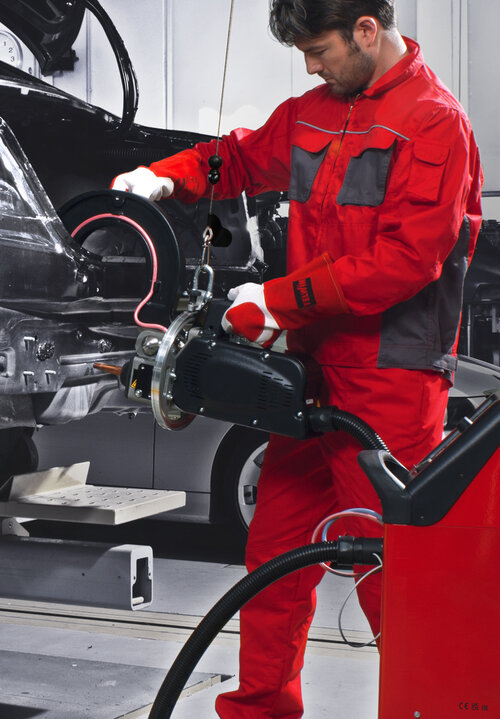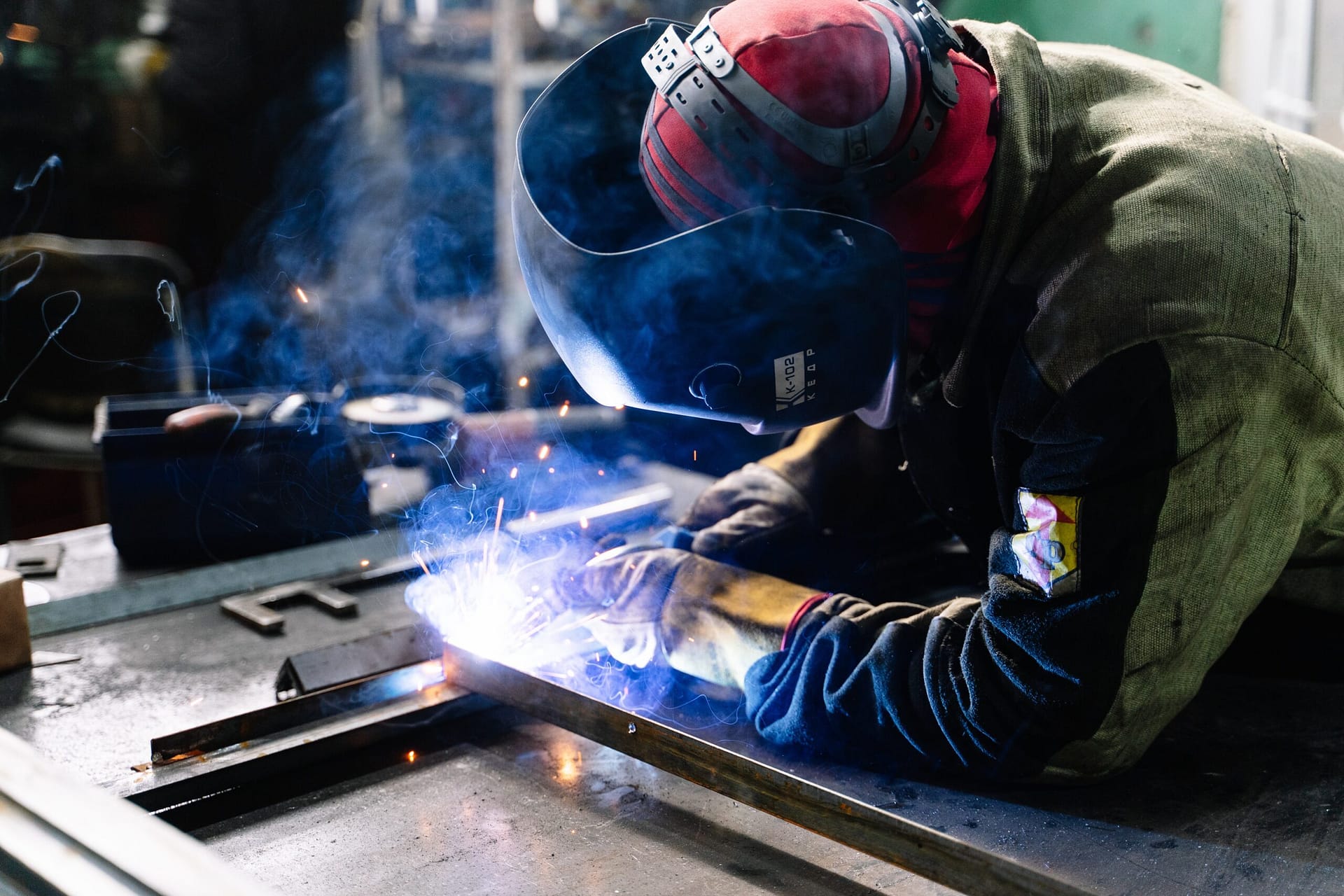Usual Welding Repair Issues and Exactly How to Address Them Effectively
Welding fixings commonly encounter a variety of problems that can jeopardize the stability of the last product. Usual problems consist of insufficient penetration, porosity, and imbalance, to name a few. Each issue presents one-of-a-kind obstacles that require certain methods for resolution. Comprehending these problems is essential for welders intending to improve their skills and outcomes. This discussion will certainly explore these usual welding repair work problems and efficient approaches to address them.
Poor Penetration
Poor infiltration occurs when the weld metal fails to completely fuse with the base product, leading to weak joints and prospective architectural failures. This problem frequently originates from insufficient warm input, inaccurate electrode angle, or inappropriate welding speed. Welders might experience poor penetration as a result of a miscalculation of the required specifications for a details material thickness or type. In addition, contamination on the base product's surface can hinder reliable bonding, aggravating the issue. To address inadequate penetration, welders should guarantee proper settings on their devices and maintain a clean job surface. Routine inspection of welds is suggested to recognize any type of deficiencies early, permitting timely corrections and the avoidance of jeopardized structural stability in bonded assemblies.
Porosity
Porosity is a common problem in welded joints that manifests as tiny gas bubbles caught within the weld metal. This defect can compromise the stability of the weld, resulting in decreased stamina and potential failure under stress. Montana Mobile Welding and Repair Fabrication. Porosity typically arises from contamination, dampness, or incorrect welding strategies, which permit gases to leave into the molten weld swimming pool. To attend to porosity, welders should ensure correct surface prep work, keep a clean working atmosphere, and utilize ideal welding specifications. Furthermore, choosing the right filler material and shielding gas can minimize gas entrapment. Normal assessment and testing of welds can help recognize porosity early, assuring prompt rehabilitative actions are taken, thereby maintaining the high quality and integrity of the bonded structure
Imbalance
Misalignment in welding can occur from numerous variables, consisting of incorrect setup and thermal growth. Recognizing the source is essential for reliable resolution. Numerous improvement strategies are readily available to realign parts and assure structural honesty.
Causes of Imbalance
Welding imbalance typically originates from a range of underlying concerns that can jeopardize structural integrity. One main reason is improper fit-up of elements prior to welding, which can lead to voids and unequal surface areas. Variations in thermal growth throughout the welding procedure can additionally cause distortion, specifically if the products being signed up with have various coefficients of expansion. Additionally, inadequate fixturing and securing might stop working to hold elements safely in position, leading to motion throughout welding. Inadequately maintained devices, including welding makers and tools, might introduce variances in the weld bead, further adding to misalignment. Operator mistake, stemming from inadequate training or experience, can additionally play a substantial role in developing misaligned welds.

Correction Strategies Available
Attending to misalignment effectively calls for a mix of restorative techniques customized to the specific issues handy. One typical technique is using jigs or components to hold parts in the appropriate placement throughout welding, making certain constant placement. Additionally, pre-heating the materials can help in reducing distortion and boost fit-up. For substantial misalignment, mechanical adjustment techniques, such as using hydraulic jacks or clamps, can be utilized to deal with the position before welding. Post-weld heat therapy may also be needed to alleviate tensions triggered by imbalance. Careful examination and adjustment during the setup phase can stop imbalance issues from coming to be significant issues, promoting a smoother welding process and improving total structural integrity.
Distortion
Distortion is an usual challenge in welding that can arise from different aspects, including uneven cooling and heating. Understanding the reasons for distortion is important for applying effective avoidance methods. Resolving this issue not only enhances architectural integrity however likewise enhances the overall high quality of the weld.
Root causes of Distortion
When subjected to the intense heat of welding, products often undergo modifications that can cause distortion. This phenomenon mostly arises from thermal development and contraction throughout the welding process. As the weld location warms up, the product expands; upon air conditioning, it acquires, which can develop interior anxieties. Furthermore, uneven home heating across a workpiece can aggravate these stress and anxieties, causing bending or flexing. The sort of product additionally plays a substantial duty; metals with varying thermal conductivity and coefficients of development might react differently, causing unpredictable distortions. In addition, bad joint design and insufficient fixturing can add to misalignment throughout welding, enhancing the likelihood of distortion. Recognizing these reasons is necessary for efficient welding repair service and prevention methods.
Avoidance Techniques
Efficient avoidance methods for distortion throughout welding concentrate on managing heat input and making certain appropriate joint design. Keeping a consistent heat input aids to minimize thermal expansion and tightening, which can cause distortion. Utilizing methods such as pre-heating the workpiece can additionally minimize the temperature level slope, advertising uniform home heating. Additionally, picking appropriate joint designs, such as T-joints or lap joints, can improve security and decrease tension focus. Carrying out correct fixturing to safeguard the workpieces in area additionally aids in maintaining placement throughout the welding process. Staggered welding series can distribute warm more evenly, stopping local distortion. By applying these techniques, welders can considerably decrease the possibility of distortion and enhance the total top quality of their welds.
Cracking
Breaking is a common problem encountered in welding fixings, usually resulting from various factors such as inappropriate air conditioning prices, product option, or inadequate joint preparation. The occurrence pipe welding of splits can greatly compromise the integrity of the weld, leading to prospective failures throughout operation. To address this problem, welders must initially assess the origin, ensuring that products are suitable and appropriately chosen for the certain application. In addition, managing the air conditioning rate throughout the welding procedure is essential; rapid air conditioning can induce stress and anxiety and cause splitting. Appropriate joint layout and prep work also add to reducing the danger. Executing these strategies can improve weld visit this site right here top quality and resilience, eventually reducing the probability of breaking in completed weldments.

Incomplete Combination
A substantial concern in welding repairs is insufficient blend, which occurs when the weld metal does not effectively bond with the base product or previous weld passes - Welding. This flaw can cause weak points in the joint, possibly compromising the honesty of the welded framework. Variables adding to incomplete combination consist of insufficient heat input, inappropriate welding technique, and contamination of the surfaces being signed up with. To address this concern properly, welders ought to assure proper pre-weld cleaning and surface prep work, along with change their welding criteria to attain ample infiltration and combination. Routine inspection during the welding process can additionally assist recognize insufficient fusion early, enabling for prompt rehabilitative measures to enhance the overall top quality of the weld
Overheating
While welding repairs can boost structural stability, overheating provides a substantial challenge that can result in product destruction. Excessive heat throughout welding can change the mechanical properties of metals, resulting in lowered stamina, raised brittleness, and warping. This phenomenon is particularly critical in high-stress applications where architectural reliability is vital. Recognizing getting too hot can include visual examinations for discoloration or distortion, along with monitoring temperature level throughout the welding process. To minimize the risks associated with getting too hot, welders ought to employ suitable techniques, such as regulating warmth input, adjusting traveling speed, and using appropriate filler products. In addition, applying pre- and post-weld warm treatments can assist restore material residential or commercial properties and improve the total quality of the repair, making sure lasting performance and safety.
Often Asked Concerns
What Are the Typical Signs of a Welding Issue?

Just How Can I Test My Welds for Quality?
To check welds for high quality, one can utilize visual assessments, ultrasonic screening, and radiographic techniques. Each strategy he said ensures structural integrity, identifies issues, and confirms adherence to defined criteria, inevitably enhancing the reliability of the welded joints.
What Safety and security Precautions Should I Take While Welding?
When welding, one should focus on safety by putting on proper personal protective tools, ensuring proper air flow, protecting combustible products away, preserving a tidy work area, and recognizing environments to avoid injuries and mishaps.
Can I Repair a Weld Without Renovating the Entire Joint?
Fixing a weld without remodeling the entire joint is feasible, depending upon the damages (Belgrade Fabrication). Techniques such as grinding, including filler product, or utilizing a welding process can effectively resolve particular defects while maintaining the surrounding framework
What Equipment Are Essential for Efficient Welding Repairs?
Necessary devices for effective welding fixings include a welding machine, cable brush, grinder, safety gear, clamps, and filler products. Each device plays an important role in guaranteeing top quality and safety and security throughout the repair work procedure. Porosity usually develops from contamination, dampness, or incorrect welding techniques, which enable gases to leave right into the molten weld swimming pool. Poorly kept equipment, consisting of welding equipments and devices, might present variances in the weld grain, further contributing to imbalance. When subjected to the extreme warmth of welding, products usually go through modifications that can lead to distortion. Breaking is a typical problem encountered in welding repair services, frequently resulting from numerous variables such as incorrect air conditioning prices, product option, or poor joint prep work. A considerable problem in welding fixings is incomplete combination, which takes place when the weld metal does not sufficiently bond with the base material or previous weld passes.
Comments on “Advanced weld correction methods from Belgrade Welding professionals”